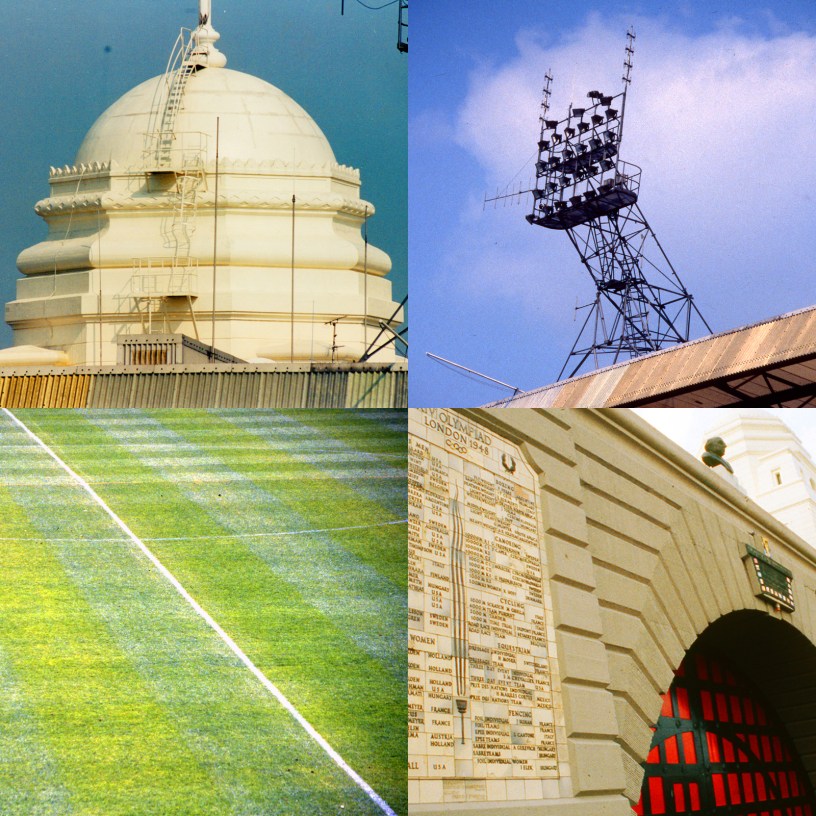Many years ago I worked on a documentary about the history of the FA Cup final. The programme has long since passed into television obscurity but one of the good things to come out of it was that I got to research and explore the old Wembley Stadium. Recently I found my photographs from that time.
Built in 1923, the Empire Stadium – to use it’s proper name – became famous for hosting major football finals. It was also the venue for the 1948 Olympic Games, the 1966 World Cup final and in 1985, the Live Aid concert. It eventually closed in 2000 and was demolished in 2003 to make way for the New Wembley Stadium which opened in 2007.
Being a football supporter who had visited the stadium on many occasions between 1977 and 1996, it felt like a privilege to have complete access to all areas.
As I walked around I felt the emptiness of the place created an unsettling calm. All football supporters dislike watching matches in stadiums that have a running track around the edge or vast spaces behind the goals. The old Wembley was the epitome of this, and the isolation was emphasised even more with no one around.
Looking back at these pictures, it’s apparent that there was something fairly ramshackle about the old Wembley. Clearly the decision to knock it down and build a new 21st century stadium was a correct one. There was opposition and even an attempt to try and crowbar the twin towers into a modern design. It would never have worked.
Despite it’s sense of history, old-school charm and iconic status, and despite many happy cup-final winning (and losing) memories, the old Wembley Stadium simply wasn’t a good place to watch football. The poor sight-lines, the access difficulties and 1920s structure all made it ill-equipped to deal with the modern day requirements of hosting 92,000 people in any manner of comfort.
The Millenium Stadium in Cardiff, which held all major finals whilst the New Wembley was being constructed, is a brilliant example of how to build a large modern stadium yet still retain a sense of intimacy and atmosphere. Fortunately the architects of the New Wembley knew this, which means that watching a match these days is a much better experience all round. And not a running track to be seen.







Very nice mate. Certainly true that despite the romance it was a bit of a dump. 7 times in my life and I don’t think I ever really had a great view. Saw lots off Scousers getting in for nothing though!
Cheers mate. I always appreciate your encouragement.
Tremendous work Stevie boy! What a great find these images are!